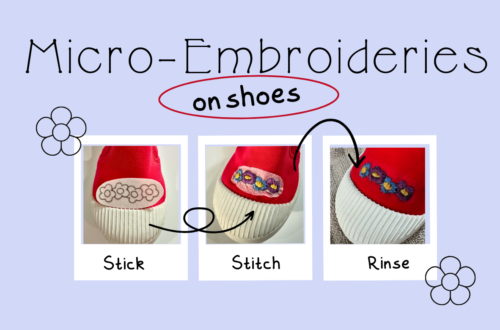
Quilted Mandalorian Paper Piecing Project
Quilted Mandalorian by Pitcher’s Boutique

Create a quilted Mandalorian and add him to a pillow, table runner or larger quilt project. With the help of Sulky Paper Solvy, you won’t have to pick out tiny pieces of paper within the seams, as the stabilizer paper is entirely water-soluble. After piecing, quilt the Mandalorian with Sulky Glowy or Poly Sparkle Thread to add a bit of glitz and fun special effects to the piece. Let’s get started, and May the Sewing Force by with You.
ABOUT THE MANDALORIAN PATTERN
This FREE Mandalorian Foundation Paper Piecing Pattern is designed by Pitcher’s Boutique, and they also carry “Baby Yoda,” a.k.a. Grogu, FPP patterns and more Star Wars™ inspired patterns. The finished block sizes are 10 x 10, 12 x 12, 15 x 15, 18 x 18, 20 x 20 and 25 x 25 inches.
The pattern is considered an intermediate pattern, and there are no instructions to explain the foundation paper piecing (FPP) process. If you’re new to FPP, here’s a basic rundown:
The section diagram that comes with the pattern is printed onto paper, which is then sewn through with the adjacent piecing fabrics layered on top. Typically, makers use lightweight printer paper and shorten their stitch length in order to perforate the paper, making it easy to remove along the seamlines when the block is complete. However, using a 2.0mm (or smaller, in some cases) stitch length makes ripping out mistakes difficult. And, oftentimes the paper likes to “stick” inside the seamline; so, when the paper is pulled away the stitches can pop or loosen. It’s a good thing we have Sulky Paper Solvy to rescue the galaxy!
Note: For a free video tutorial on foundation paper piecing, look to our Road Trip Quilt Webcast with Rachel Painter.
ABOUT SULKY PAPER SOLVY
Sulky Paper Solvy is specially made for Foundation Paper Piecing. It’s printable, lightweight, and WATER-SOLUBLE. That’s right! When the piecing is complete, the paper sections are easily removed.
Generously moisten a Q-tip or cotton swab, and then run it along the seamlines to release the paper sections and lift them away from the fabric. If dealing with super small sections, rinse those away under running water. Or keep them intact until the entire project is complete, and then put the project in the washing machine on a rinse and spin cycle to remove all traces of stabilizer.
When printing the pattern onto Paper Solvy, make sure to print only the pages you need for piecing. This way, you won’t accidentally print the instructional sheets onto the precious Paper Solvy. Set the printer for the lowest ink setting, if possible. This ensures you won’t over-saturate the stabilizer with ink. If this isn’t an option for you, you may need to let the Paper Solvy dry a bit after printing to ensure the ink is absorbed by the product before beginning the foundation paper piecing (FPP) process.
There is no need to shorten the stitch length when piecing, as most FPP patterns direct. That’s only necessary if you need to perforate the paper to remove it; and in this case, that’s not necessary.
FABRICS FOR FPP
Lightweight quilting cottons are your best friend for FPP projects. And the best part about FPP is that you can dive into your fabric stash and search for all those little bits and pieces that aren’t enough for a full project Find gray solids and prints for the Mandalorian suit; look for black prints and solids for accents. For the background, choose all the same fabric or a selection of batiks (to mirror the Mandalorian sunset). Glow-in-the-dark fabrics with stars, dots or galaxy motifs are super appropriate and fun for this, too!

MANDALORIAN QUILTING TIPS
After FPP is complete, layer the Mandalorian block with batting and a backing fabric of your choice. Make sure the batting and backing is cut at least 2″ longer and wider than the block itself.
Keep the Mandalorian portion of the finished project, whether it’s a pillow, table runner or larger quilt, fairly simple. Quilt straight or intersecting stitching lines along the armor and add detail stitching to the weapon. Mirror the same stitching on the helmet but only in a few areas. Audition the quilting onto the piece using a sheet of Sulky Sticky Fabri-Solvy.
Take the stabilizer sheet, which is also water-soluble!), and remove the paper backing. Place the stabilizer “sticker” on top of the FPP block. Draw on the stabilizer using a removable fabric marker to audition the stitches. Once satisfied, simply stitch along the lines you’ve perfected.
After quilting is complete, remove the Sticky Fabri-Solvy by placing the block under warm running water. Incidentally, this will also remove the Paper Solvy (a win-win!).
Don’t fear this seemingly difficult pattern, as “Fear is the path to the dark side.” Use the Paper Solvy Force and you will find the path to quilted Mandalorian enlightenment! Then, you can try your hand at our Compass Quilt, made with a special pack of 128 Paper Solvy sheets!








One Comment
Freda
I am appalled that you would use a symbol of a person wielding a gun in the light of the political climate today concerning guns. You should remove it immediately!